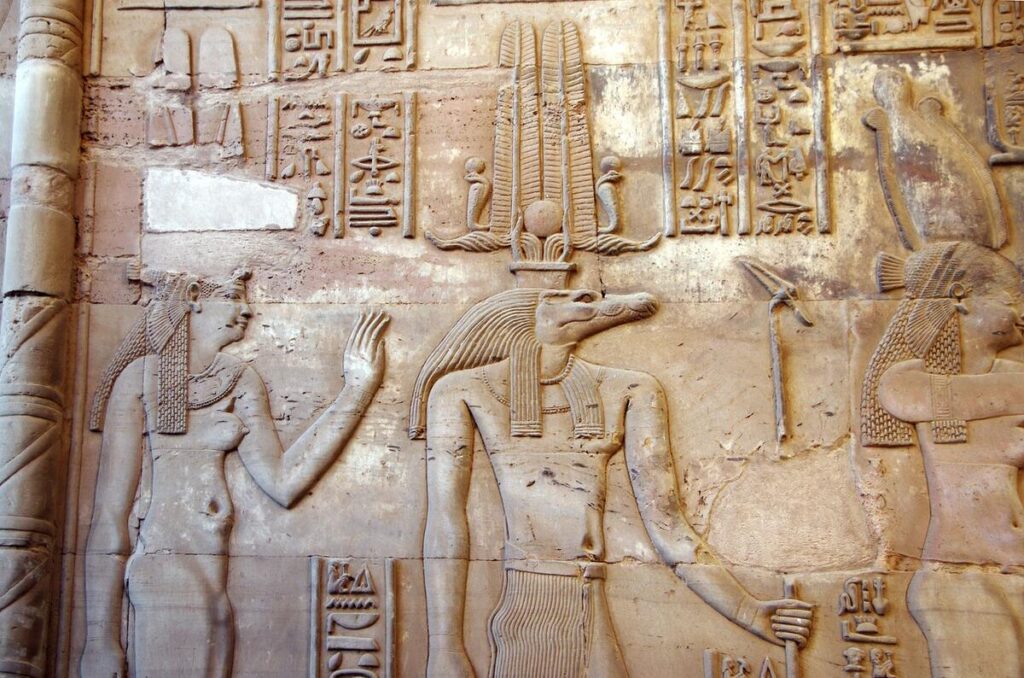Unusual and Lesser-Known Facts about Ancient Egypt
Ancient Egypt has always captivated us with its majestic monuments and awe-inspiring history, but what about the odd, quirky tidbits that tend to get overshadowed? From their use of contraception to ancient pregnancy tests, get ready to explore the weird and wonderful side of this ancient civilization that’s often left untold.
Pregnancy Test in Ancient Egypt

Imagine predicting pregnancy without modern tools! Ancient Egyptians had their ingenious way: the barley and wheat test. Women would urinate on barley and wheat seeds for several days. If barley sprouted, it indicated a male child, while wheat suggested a female. This primitive yet surprisingly accurate method fascinated and played a crucial role in their society, showcasing their unique understanding of early science and biology.
Hippopotamus as a Symbol in Ancient Egypt


Among the intriguing symbols of Ancient Egypt, the hippopotamus held a fascinating significance. Contrary to its aggressive nature, the hippo represented fertility, protection, and rebirth in Egyptian mythology. Often depicted in various artifacts and amulets, this mighty creature symbolized the primordial forces of chaos that needed to be controlled. The Egyptians revered the hippopotamus for its dual nature—dangerous in reality but revered as a symbol of life and resurrection in their culture.
Crocodile Worship in Ancient Egypt


Amidst the tapestry of revered animals in Ancient Egypt, one surprising figure stands out—the crocodile. Along the Nile, particularly in areas like Kom Ombo and Thebes, crocodiles weren’t just feared predators; they were revered as sacred beings. Egyptians believed they embodied the fearful god Sobek, associated with fertility, protection, and the Nile’s life-giving waters.
Temples dedicated to Sobek saw these colossal reptiles revered and even mummified after death, with rituals honoring their connection to the divine. The veneration extended to live crocodiles, where they were cared for and adorned with precious jewelry. This peculiar form of animal worship exemplifies the intricate beliefs and sacred reverence Ancient Egyptians held for the creatures that shared their world, showcasing a blend of fear, respect, and spiritual significance.
Pharaoh’s Secret Snake Trick in Ancient Egypt:
The ancient land of Egypt was known for its mystique and awe-inspiring wonders, including the intriguing Pharaoh’s snake trick. During extravagant ceremonies, Pharaohs showcased their power by seemingly bringing a snake to life. This mesmerizing illusion involved the use of a heat-sensitive substance, likely a combination of chemicals, that, when ignited, created the illusion of a serpent slithering out from the ground.
This captivating display, often performed in front of a mesmerized audience, reflected the Pharaoh’s authority and their association with divine powers. Though the exact technique remains a mystery, this ancient illusion symbolized the Pharaoh’s command over nature and served as a testament to the advanced knowledge and skill of ancient Egyptian magicians.
Invention of Breath Mint in Ancient Egypt


Amidst their myriad contributions to civilization, the inventive minds of ancient Egyptians also left their mark in an unexpected realm—oral hygiene. Breath mints, in their rudimentary form, were conceptualized by the Egyptians as early as 2700 BC. They ingeniously combined various aromatic substances like myrrh, cinnamon, and frankincense into pellets or chewable concoctions.
These fragrant mixtures not only freshened breath but were believed to possess medicinal properties, aiding digestion and warding off illnesses. The innovation and utilization of these breath-freshening agents showcased the Egyptians’ early understanding of the importance of oral hygiene and their penchant for blending practicality with the mystique of aromatic substances.
Use of Contraception in Ancient Egypt


Beyond their architectural marvels and intricate belief systems, Ancient Egyptians exhibited a surprising understanding of reproductive health and contraception. Historical records suggest that ancient Egyptians employed various methods of birth control, utilizing natural ingredients and materials.
Intriguingly, women used mixtures containing substances like honey, acacia leaves, and crocodile dung as vaginal suppositories to act as spermicides. Additionally, ancient papyrus texts describe the use of barrier methods, such as inserting softened papyrus into the vagina, acting as a primitive form of a cervical cap. These early attempts at birth control reveal the Egyptians’ advanced knowledge of herbal remedies and their interest in regulating fertility.
Mysterious Disappearance of Hatshepsut in Ancient Egypt
Embed from Getty ImagesThe annals of Ancient Egypt hold tales of the enigmatic Queen Hatshepsut, one of the most remarkable female pharaohs in history. Yet, her reign is shrouded in mystery, notably her unexpected disappearance from historical records. Hatshepsut ascended the throne in a daring move, ruling as pharaoh in a male-dominated society. Her reign was marked by prosperity, grand construction projects, and thriving trade.
However, towards the end of her reign, the historical accounts suddenly fall silent. The circumstances surrounding her death or disappearance remain a subject of debate among historians. Some theories suggest that her stepson, Thutmose III, may have attempted to erase her legacy in order to consolidate his rule. Nonetheless, Hatshepsut’s mysterious disappearance has puzzled historians, adding an aura of mystery to the legacy of this powerful female pharaoh.
Hair fashion in ancient Egypt
Embed from Getty ImagesHair was not just an aspect of appearance in ancient Egypt; It was a canvas of creativity and cultural expression. Over the millennia, hairstyles have evolved, reflecting social status, fashion trends, and religious beliefs. From elaborate wigs adorned with intricate beads and jewels to the practical shaved heads of commoners and slaves worn by the elite, hair played an important role in ancient Egyptian society.
Men and women often wear wigs made of human hair or plant fibers, not only as a fashion statement but also to protect their heads from the scorching sun. Braids, curly hair and intricate hairstyles weren’t just about aesthetics; They also had symbolic importance. Hairstyles varied depending on the occasion, reflecting marital status, age, or even religious devotion. These evolving hair fashions demonstrated the Egyptians’ attention to detail and the importance they placed on personal beauty and appearance.
Beer Heiress in Ancient Egypt
Embed from Getty ImagesAmidst the rich tapestry of ancient Egyptian society, unexpected positions of power and influence existed, such as the role of heir apparent. In a society where beer was a staple, especially for its nutritional value and social importance, some women held respected positions related to brewing and distributing this ancient beverage.
“Beer heiress” was a prestigious title given to women who inherited or managed breweries, often a craft passed from mother to daughter. These women exerted considerable influence not only in beer production but also in social spheres. They were responsible for ensuring the quality of the wine and enjoyed revered status due to the cultural importance of beer in religious rituals and daily life. The concept of beer succession underlines the unconventional roles of women in ancient Egyptian society and their important contributions to various aspects of daily life.
Also Read :
5 Weird Facts About Ancient Egypt
7 Fascinating Pharaohs of Ancient Egypt
5 Harsh Realities of Egyptian Royal Families
10 Weird Facts About Ancient Egypt
Conclusion
Who would have thought that beneath the mystique and grandeur of ancient Egypt lay such fascinating and unexpected secrets? From pregnancy test to fashion statements, their daily lives were peppered with quirks and innovations that continue to intrigue us today.




